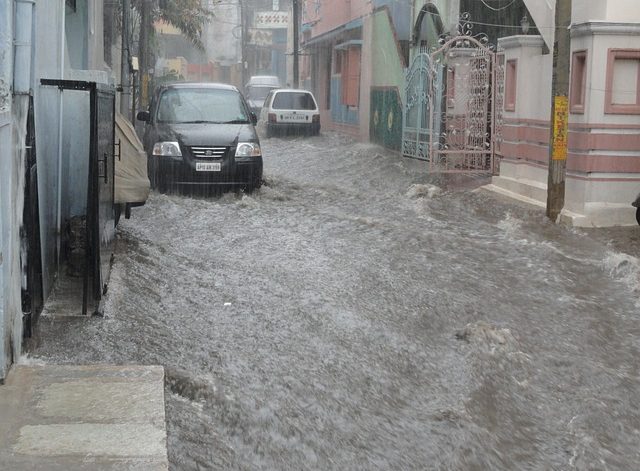Need For Flood Mitigation Measures and Management Techniques In Pakistan
After the unusual monsoon season that culminated into the devastating floods of 2022 in Pakistan; there is barely a need to define what flood is, as no one would be a stranger to this term. As we saw the horrifying visuals of the overwhelming volume of water that drowned entire regions and settlements. Instead, these question arise: what can we do post-flood for the regions that have been submerged and how can we aid them in the resettling process along with dealing with the burning question of how to avoid a disaster of this scale again.
Check out: Monsoon Season of Pakistan- Importance and Problems
Flood Mitigatory Measures – Prevention Of Future Disastrous Flooding
The first step is to mitigate the effects. These are actions taken as an attempt to lessen the severity of the disaster in the future. Some of the suggested measures are:
- Pakistan lacks the sufficient funding to build the much needed dams, levees , bridges, evacuation routes and culverts. If these are constructed then the threat of floods can be much less and be managed to a better degree.
- In addition to this, cities that are susceptible to floods in the future need immediate attention to have modified construction of homes, such as use of ‘stilt houses’ as precaution against floods to reduce damage.
- Planting more vegetation as vegetative cover provides water retention and thereby causes less damage in settlements ahead. This proves that deforestation leads to higher chances of flooding.
- Flood Modeling plans are crucial along with strategic land use to better understand the layout of the area and properly predict any future changes or disasters.
- There also needs to be a nationwide emergency detection and warning system that can inform people beforehand allowing them to evacuate to a safe place within a reasonable time. This will save a lot of life and property loss if implemented.
- Flood prone areas as well as river banks must be monitored and any construction on those land areas must be banned and any violation must be dealt with accordingly. This will reduce monetary damages, cost and overall property loss. For more information, read: Impacts of Unplanned Development on Northern Areas of Pakistan
- Areas vulnerable to GLOF events need to be evacuated and people from those areas need to be relocated and provided housing and all necessary facilities to prevent any disastrous impacts in case of a GLOF event. For more detail, read: Glacial Lake Outburst Floods in Pakistan- Causes and Effects.
- Drainage system maintenance in urban cities should be done regularly and drains should be cleaned especially before the monsoon season to prevent urban flash flooding incidents like that of Karachi flash flooding in 2022, like that of Rawalpindi-Islamabad after a cloudburst event. For more information about these events, check out: Karachi Monsoon Urban Flash Flooding – Causes and Impacts and Twin Cities ISB-RWL Cloudburst Explained –Causes and Effects.
Flood Management Techniques
Disaster management differs from mitigatory measures in the fact that mitigation is done in order to reduce the impact in the future in case a disaster falls again, whereas disaster management includes preventing the disaster effects from accumulating and snow balling into an even bigger one. It includes managing and giving proper care to injured people, establishing systems for locating missing or dead people, removing structural debris and destroyed infrastructure, etc. if these are not considered and taken care of, these may in turn compound and become another disaster in the wake of the natural one. Some of the disaster management techniques are:
- In the aftermath of floods, there is a high incidence of water borne diseases such as cholera, malaria as well as there are great problems for new mothers and infants. These need to be managed by ensuring boiled water is used for drinking, food is prepared safely and kept away from flood waters, protecting yourself from still water and food packages and maternity kits delivered at a priority basis.
- Implement flood control procedures such as building alluviums (manmade diversion channels), terracing hillsides, retention ponds.
- After it is detected that a flood has passed through a region, communication towers must be erected temporarily to aid communication and locate missing persons/belongings.
For more detail, read: How To Prevent Hazardous Monsoon Season Flooding in Pakistan
Pakistan’s Future Flood Control Plan
With intense heat waves, increased precipitation and warming weather that is causing rapid melting of Himalayan glaciers there is no doubt that Pakistan is at a risk of more flooding in the foreseeable future and there must be immediate action for managing them effectively in order to reduce the devastation. The most effective way for this would be to construct dams but since not enough funding is available it is not possible immediately. Therefore, Pakistan is planning to deal with the climate change induced future floods by restoring wetlands, mangroves, reforestation and floodplains. The idea behind it is that by restoring natural resources we can mitigate and reduce the flood impacts.
However, this would require new laws, policies and rules that are enacted swiftly accompanied with hefty fines and penalties, including land use management laws to ensure no construction takes place in floodplain zones and river banks. Our best chance would be to develop engineering solutions that work with nature rather than go against it.
You may also like to read: Flash Floods- Causes, Effects, Prevention and Management
After the 2010 floods, the affected regions had almost recovered after a decade when the same calamity befell us again. With all the devastating effects of the recent floods that have wreaked havoc and displaced more than 33 million people alone; Thus, it should be an immediate concern for the government to plan for the future.
If you liked this article, you may also be interested in: How to Reduce Disastrous Impacts of Floods? – Mitigation Methods
We hope you liked this post! Please comment below if you have any suggestions, comments or feedbacks! We at #envpk love hearing from readers! Thanks.





1 Comment
Good job. Do share with NDMA and PDMA and act to promot e these measures during the monsoon season and beyond